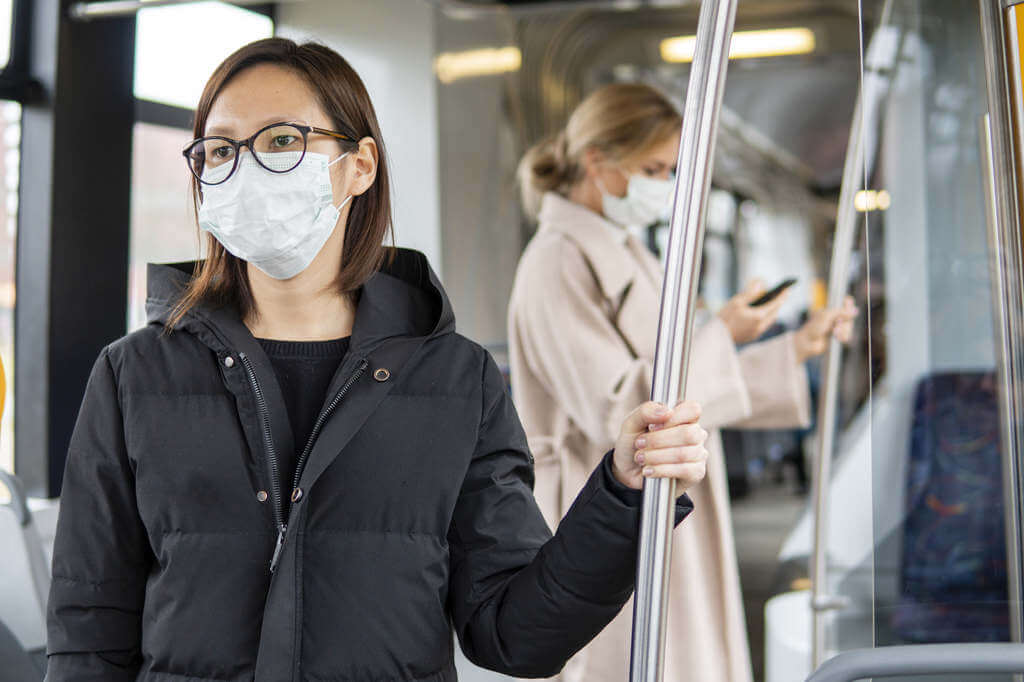There is an ideological controversy over the wearing of the mask between supporters and opponents of this piece of cloth, which, we are told, is designed to “protect oneself and others”. What does science have to say about it?
The wearing of masks for the general public in enclosed spaces has been compulsory in France since 20 July 2020. It has become compulsory outside, in 330 municipalities or in certain very busy areas since 1 August. But the Prime Minister, Jean Castex, announced on Tuesday 11 August 2020 in Montpellier his intention “to extend as far as possible the obligation to wear masks in outdoor public spaces”. The authorities are envisaging making it compulsory in enterprises. Will it be necessary one day to sleep with it?
In Germany, Great Britain, the United States and, to a lesser extent in France, groups are opposed to the obligation to wear the coronavirus face mask. In the name of freedom, they say. And because it provides no protection against viruses and other pathogenic germs. On the contrary.
Anti-masks” are mainly expressed via social networks. They have also organized large demonstrations in Berlin, London and Florida to denounce the diktat of the authorities. But these “coronasceptics” are being torn to pieces by the mainstream media, which see them as “conspiracy seekers” from the “facho-sphere” (far right) reinforced by the back-blocks (far left). In short, the big anything.
Useless and even dangerous!
To get out of this ideological imbroglio, it is essential to turn to science. But scientists do not agree among themselves. Those who, in France today, tell us that we must wear a mask to “protect ourselves and others” are the same ones who, at the beginning of the epidemic, told us the opposite. When should we believe them?
More serious is this meta-analysis published in July 2020 in PrimaryDoctor.Org, a journal for doctors. It provides useful insights for the layman. What does it say? Basically, that the protection of surgical masks is only apparent. They’re of little use in protecting against viruses in closed environments. They’re completely useless, even “dangerous”, in an open environment.
Culture broth
To understand, it is necessary to know that masks are intended to block pathogenic germs: bacteria and viruses, in particular. Bacteria are fairly large micro-organisms, from 1 to 3 microns. Viruses are smaller. The SARS-CoV2, the infectious agent of Covid-19 for example, is only 0.125 micron in size.
When you breathe through a mask, you exhale,” says a scientist from a major American laboratory, who explains that he does so anonymously. That is to say, vapours and odours, which are generally not very pleasant. They impregnate the tissues. The fibres can spread and no longer act as a barrier. But, above all, the exhalations will feed this culture broth where microbes of all sizes will multiply at will. For it to be effective, the mask should therefore be changed every half hour, taking great care during the break and removal. Otherwise the inspired germs are sent into the deep layers of the lungs. »
There are worse things. The mask has a static effect. It attracts bacteria and viruses, much like Swiffer wipes attract dust. Especially in open environments when the air pressure is not controlled (like in a laboratory). That is everywhere, from the city to the sea or the mountains. You can imagine what happens next. With each breath, you get a little more self-contaminated.
The different masks
The meta-analysis published in Primary-Doctor.org reviews the effectiveness of different masks on the market. “N95 masks (so called because 95% of the particles with a diameter of 0.3 micron are filtered out by the mask in front of the wearer) are not very effective because coronaviruses have a diameter of about 0.125 micron. Tissue masks are equally ineffective at blocking particles 0.3 microns and smaller.
How effective are surgical masks in stopping coronavirus transmission in humans? The experimental and control groups, respectively masked and unmasked, were found to “not spread any detectable virus in respiratory droplets or aerosols”. In this study, they “did not confirm coronavirus infectivity” as found in the exhaled air.
“We know that wearing a mask outside health care facilities offers little or no protection against infection. Therefore, the likelihood of catching Covid-19 during a transient interaction in a public space is minimal. In many cases, the desire for widespread masking is a reflexive response to pandemic anxiety.
Risks and Benefits
The use of face masks, whether fabric, surgical or N95 masks, creates a poor barrier to aerosolized pathogens, as can be seen in the meta-analyses and other studies in this paper, allowing both transmission of aerosolized pathogens to others in various directions, as well as self-contamination.
Conclusion: “The above data show that masks are used more as instruments to obstruct normal breathing than as effective barriers against pathogens. Therefore, masks should not be used by the general public, either adults or children, and their limitations as a prophylaxis against pathogens should also be considered in medical settings. »
#COVID19 😷 | Le port du masque sera obligatoire à #Paris dans les zones à forte fréquentation de personnes à compter du lundi 10 août à 8h.https://t.co/HOfho8JcQn
Pour plus de détails consultez notre communiqué de presse 👇 pic.twitter.com/cPigy6eWge— Préfecture de Police (@prefpolice) August 8, 2020

